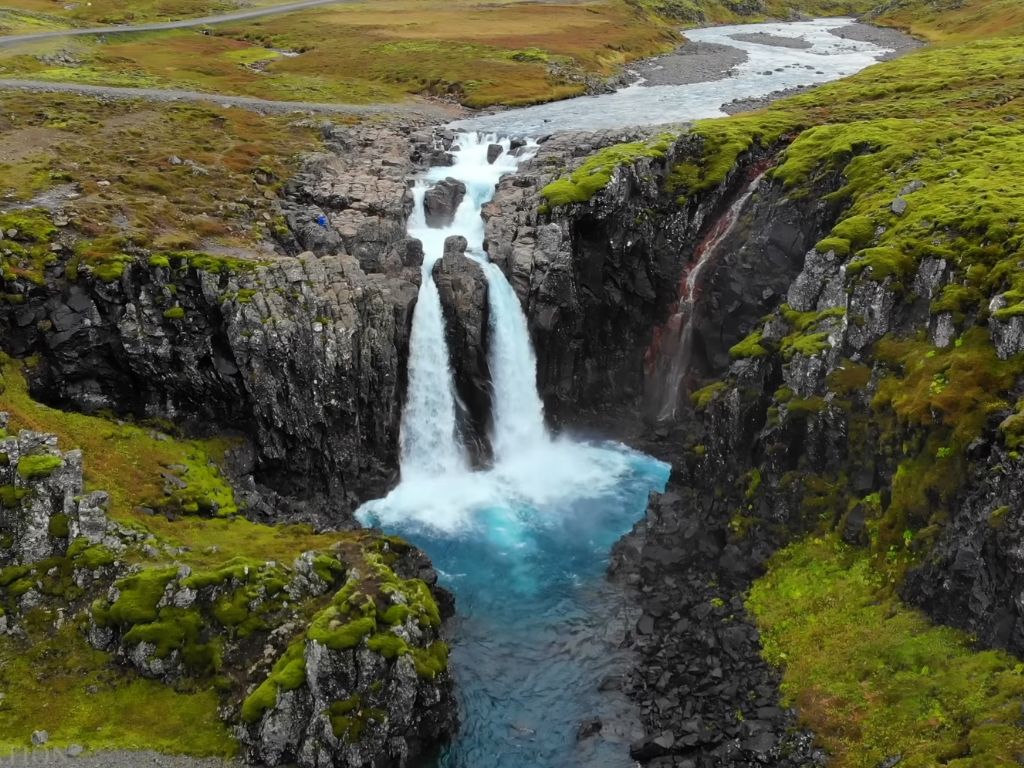Iceland has topped the safety charts for 12 years straight. Its stunning views and rich culture attract visitors worldwide. The friendly people make it an inviting place to explore.
However, it’s vital to stay alert. Petty crimes and natural dangers exist. Knowing how to stay safe can make your trip unforgettable.
Key Takeaways:
- While Iceland is generally safe, it’s crucial to be mindful of petty crimes and keep your belongings secure.
- Violent crime is rare but has been known to occur in downtown Reykjavik.
- There is a threat of terrorism in Europe, and it’s important to be aware of your surroundings and follow local authorities’ instructions.
Safety and Security in Iceland
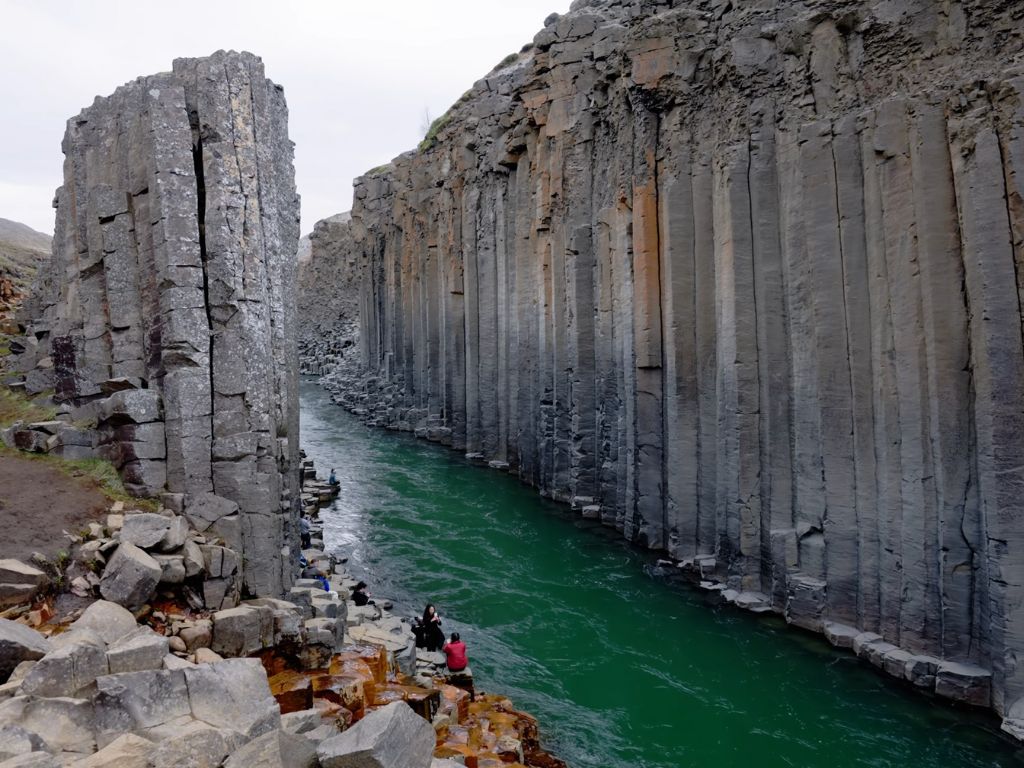
When you travel in Iceland, make safety your first concern. It’s vital to take steps to prevent any problems on your trip.
Here’s some important advice to keep in mind:
- Iceland Safety Tips: Always be aware of your surroundings and stay vigilant during your travels.
- Travel Alerts Iceland: Avoid areas where demonstrations or large gatherings are taking place.
- Iceland Travel Updates: Monitor local media for any ongoing demonstrations and stay informed.
- Travel Tips Iceland: Exercise caution when swimming in coastal waters, as riptides and strong ocean currents can be dangerous.
In Iceland, the coastal areas can surprise you. It’s very important to be careful, especially on black sand beaches in southern parts. There, sneaker waves can suddenly come and pose a danger. These are unexpected big waves between smaller ones. They can catch people by surprise. Always follow warning signs and watch out for local advice.
Adventure tourism activities like trekking and biking should always be done with a companion, and it’s important to have travel insurance that includes helicopter rescue and medical evacuation.
It is a good idea to let Icelandic officials know your travel plans. Also, always carry a cell phone with the emergency numbers saved. Being ready and taking precautions can help you fully enjoy your Iceland trip.
Natural Hazards and Climate
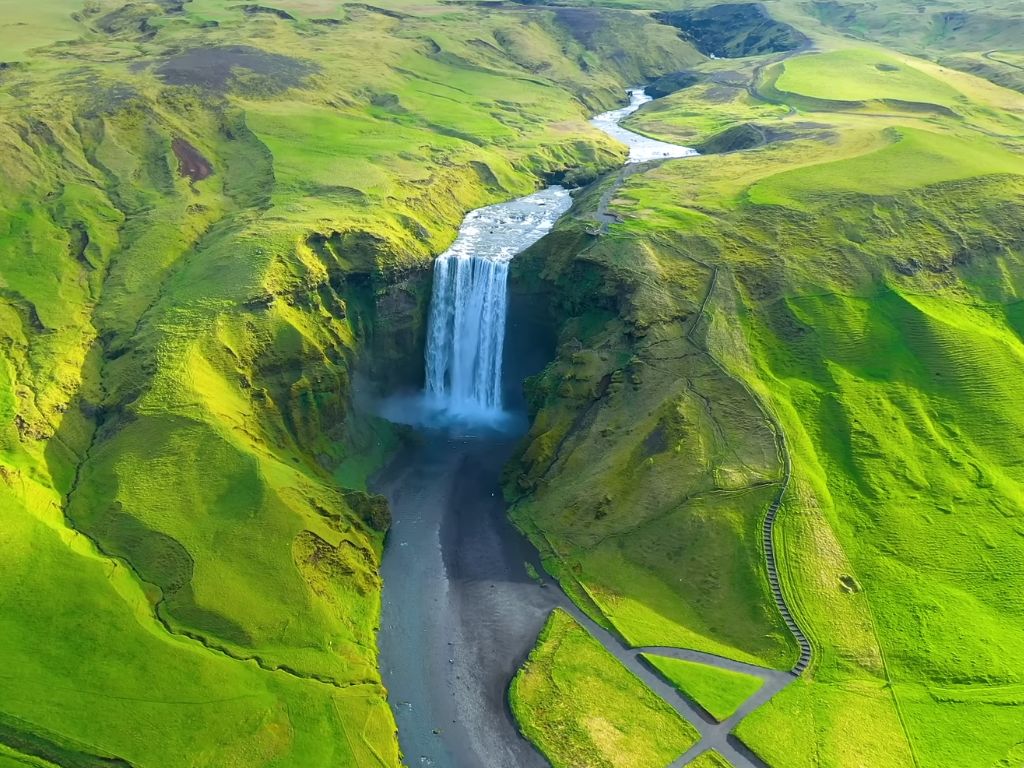
Iceland’s natural beauty is stunning but has risks. Being aware of the weather and terrain dangers is key. Stay informed and take precautions for a safe trip.
Weather Conditions
Iceland’s climate is changeable and often harsh. You must be ready for cold, wind, and storms. Wear layers and bring the right clothes for all types of weather. Keep an eye on the weather reports to plan wisely.
Trekking and Hiking
There are amazing trails in Iceland to explore. From glaciers to volcanic lands, it’s breathtaking. Some trails might not be easy to follow, so plan ahead. Always check the route, current conditions, and if you need permits. Proper gear is a must, and hiring a guide for tough hikes is smart.
Volcanic and Geologically Active Areas
Iceland’s volcanic areas are both fascinating and risky. Pay attention to safety rules and always stay on marked paths. Don’t go beyond barriers or into restricted zones. Remember, the ground can be unstable. Your safety comes first.
Road Conditions
Driving in Iceland offers great views, but roads can be tricky, especially in the countryside. Check the roads and the weather before you go. Use a four-wheel-drive for off-the-grid places. Always tell someone your travel plans. Winter could block some roads, so plan your trip well.
Coastal Waters and Rivers
Iceland’s beaches and rivers may look inviting, but they’re dangerous for swimming. Strong currents and tide changes can be perilous. Always be careful and follow water safety tips. Avoid swimming alone and watch for lifeguard signs.
Enjoy your Icelandic adventure but always respect nature’s power. Stay informed, get ready, and adhere to safety advice. This way, your journey will be both safe and unforgettable.
Entry and Exit Requirements for Iceland
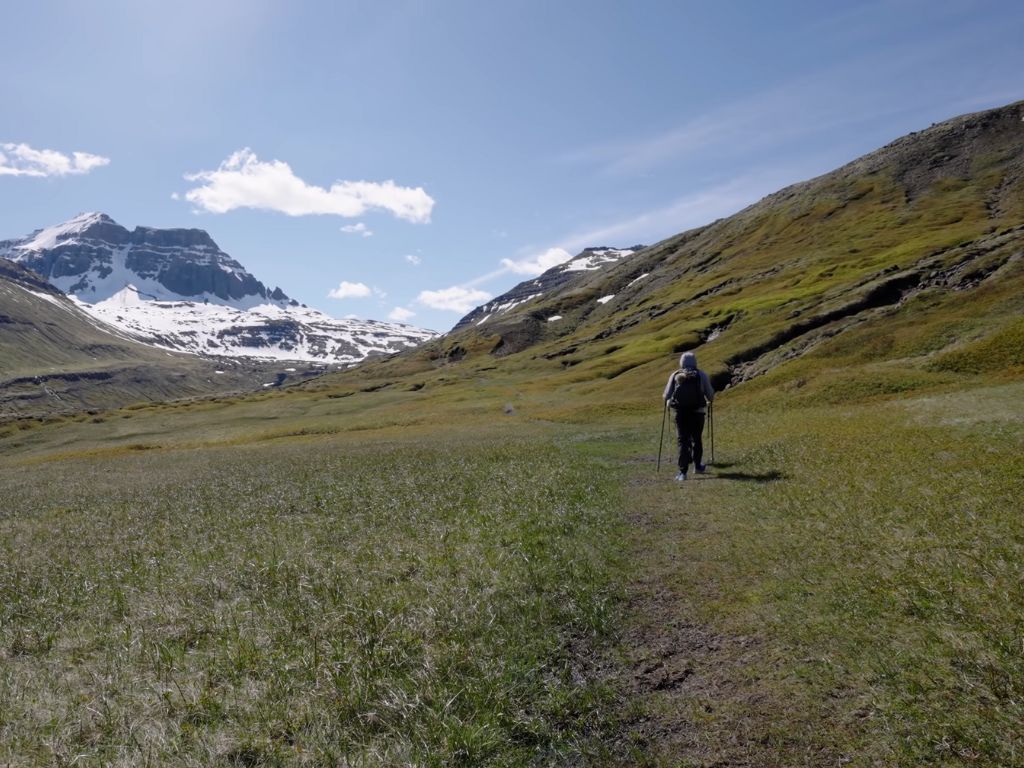
Before you start your Icelandic journey, you should know the rules about coming and going. Iceland is part of the Schengen area, so it has its own set of rules for travelers. For instance, Canadians can visit Iceland for 90 days in a 180-day period without a visa.
If you plan to stay longer than 90 days or work or study while in Iceland, you’ll need something more. Make sure to look into what you’ll need for your specific situation. This will make your arrival and departure from Iceland go smoothly.
Your passport is a key thing to consider. It must be valid for at least three months past your planned exit date from the Schengen area. Always check your passport’s validity before you travel to avoid any trouble.
Requirements Summary:
Key points for coming and going:
- Canadians have 90 days to visit Iceland within 180 days without a visa.
- If you’re staying longer than 90 days or working or studying, you’ll need a visa or permit.
- Check the rules that apply to you to ensure a smooth trip.
- Your passport must be valid for three months beyond your planned exit from the Schengen area.
Follow these steps for a smooth journey to Iceland. Then, enjoy all the amazing things this country has to show you.
Health Information for Traveling to Iceland
Planning a trip to Iceland means looking after your health. By taking the right steps, you can have fun and stay safe. Below are tips to stay healthy on your Icelandic adventure.
Consult with a Healthcare Professional
Before your trip, talk to a doctor or visit a clinic. They’ll give you advice that fits your health and travel plans. Plus, they’ll make sure you have the right vaccinations, like for measles and tetanus.
Stay Informed About Health Risks and Travel Advisories
Keep an eye on any health warnings or travel alerts for Iceland. Watch out for news on diseases, including measles and COVID-19. It’s vital to know the latest health news, and never hesitate to see a doctor if you need to.
Travel Insurance Coverage
Having travel insurance is a smart move. It covers your health, activities, and if you lose your stuff. Make sure your plan also helps with medical flights if you need one.
Volcanic Eruptions and Natural Attractions
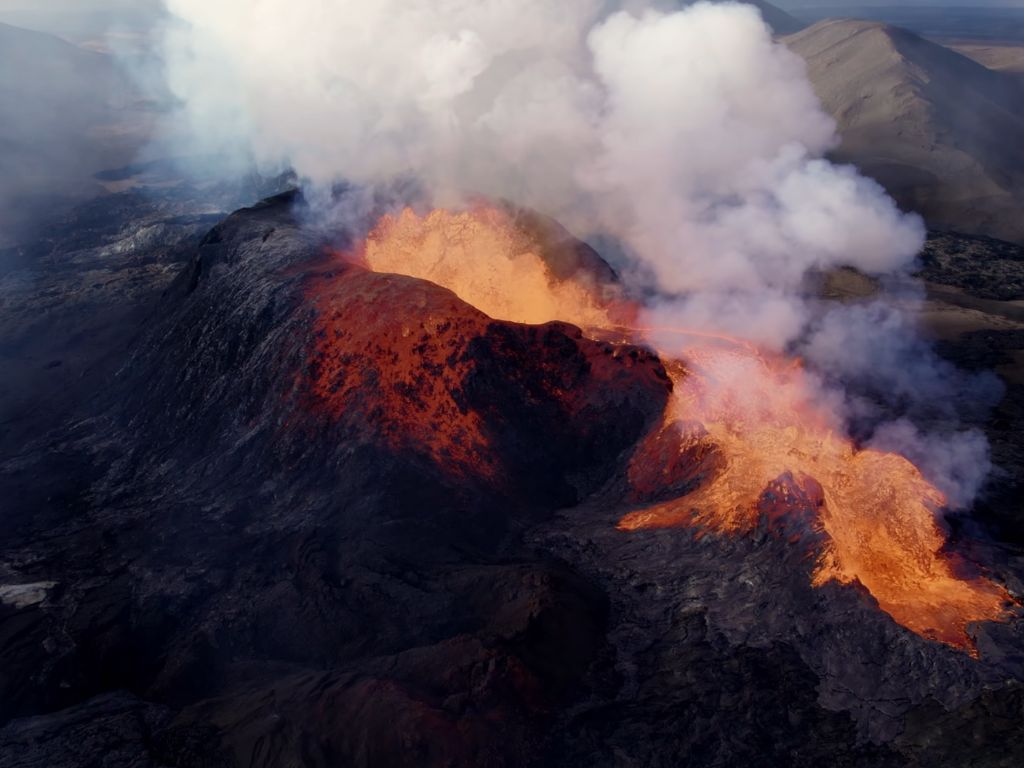
Iceland is known for its exciting volcanic activity that attracts visitors worldwide. It’s important to think about safety first. Be sure to keep an eye on travel news and remember to check for updates on Iceland’s natural sights for a great and safe trip.
The Reykjanes Peninsula has seen volcanic eruptions lately, offering a stunning show. For your safety, keep away from the dangerous zones. Always follow what local experts and civil defense groups tell you. Keep up to date with news and obey any safety rules that are in place.
When you visit Iceland’s beautiful natural spots, taking care is key since dangers might not be obvious. Always use the paths that are meant for walking, especially near geysers. The hot steam and water there can be risky. Walking where it’s allowed helps keep you safe and the area nice for others to enjoy. Vr2800 Admire the stunning views responsibly.
Driving around Iceland, especially in winter, can be tough. Watch out for the road conditions, mind the speed limits, and be ready for sudden changes in the weather. Think carefully about your actions and put safety first. Remember, the northern lights are beautiful but can be distracting and dangerous on the roads.
| Volcanic Eruptions and Natural Attractions | Key Considerations |
|---|---|
| Stay updated with travel updates and information | Ensure a safe and enjoyable experience |
| Respect safety restrictions and instructions from local authorities | Prioritize personal well-being and follow regulations |
| Stick to marked paths and designated routes | Enhance personal safety and minimize impact on the environment |
| Pay attention to road conditions, speed limits, and weather changes | Stay alert and prepared for safe road travel |
| Be cautious of distractions caused by the northern lights | Prioritize focused driving and mitigate risks |
Keep these tips in mind as you plan your trip to Iceland. They’ll help you explore safely. Being informed and traveling wisely will make your trip memorable. Plus, you’ll help protect the unique beauty of Iceland.
Transportation in Iceland
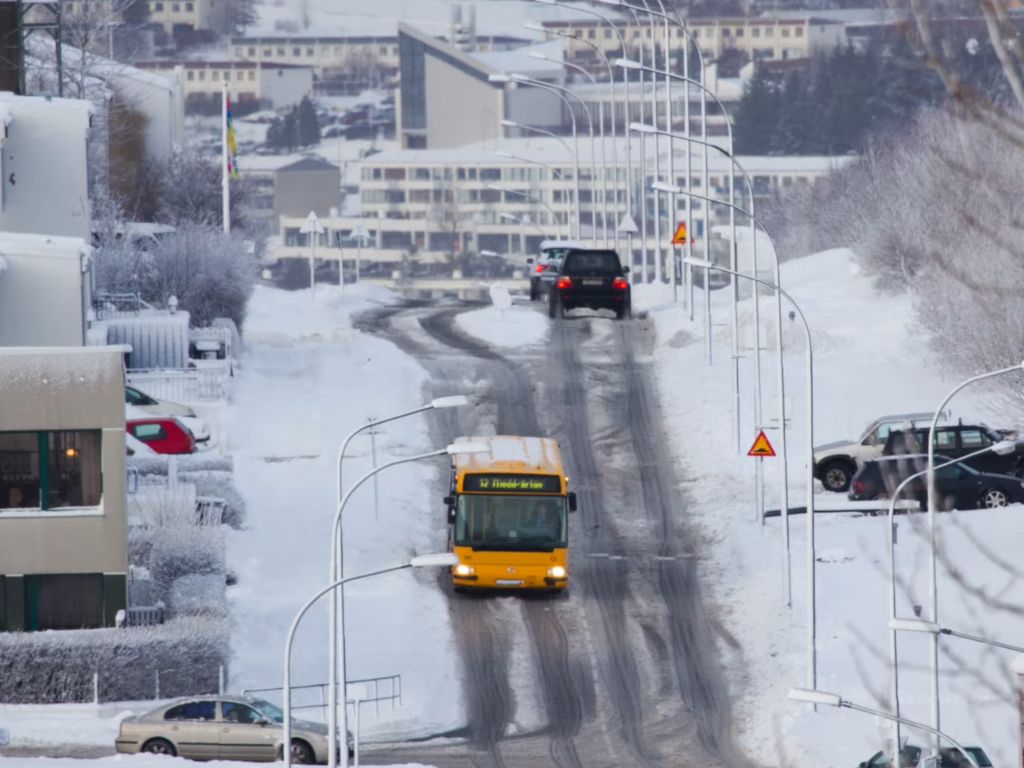
Getting around Iceland outside Reykjavik can be tricky. But there are options to see the country’s beauty.
In Reykjavik, buses are the main way to move around. They take you to top sites, eateries, and stores easily.
If you want to see more than the city, long-distance buses cover the whole country. They make travel comfortable and reach many spots.
Taxis are ready in big cities and busy spots, making travel easy. They’re good for getting to your place or for local touring.
To reach Iceland’s remote islands, ferries are available. They’re a special way to see hidden coastal areas.
Iceland lacks trains, so buses, taxis, and ferries are your main travel choices. They make exploring the country doable.
Flying is also a great way to get to Iceland. With many flights and cruise ships stopping over, it’s easy to reach Iceland’s wonders.
Public Transportation Options:
- Municipal bus services in Reykjavik
- Long-distance buses operating throughout Iceland
- Taxis in main cities and populated areas
- Ferry services connecting the main island to remote islands
Transportation Tips:
- Plan your transportation in advance, especially for long-distance travel
- Check with transportation providers for up-to-date schedules and availability
- Consider purchasing a travel pass or card for convenient access to buses and other transportation options
- Be mindful of the time it takes to travel between destinations, as Iceland’s geography can result in longer travel times
- Keep in mind that some remote areas may have limited transportation options, so plan accordingly
Although transportation is mainly focused in Reykjavik, Iceland’s varied options let you enjoy its natural charm.
| Transportation Option | Availability | Key Features |
|---|---|---|
| Municipal Bus Services | Mainly available in Reykjavik | Convenient for exploring the capital region and nearby areas |
| Long-Distance Buses | Operate throughout Iceland | Connect different regions, allowing travel to various destinations |
| Taxis | Available in main cities and populated areas | Flexible and convenient for local transportation |
| Ferry Services | Connect the main island to remote islands | Offer access to unique and less-visited destinations |
| Air Travel | Flights to and from Iceland | Connects Iceland with international destinations |
Conclusion
Traveling to Iceland is an amazing adventure that requires good preparation. Keep up with the Iceland travel advisory and safety tips to have a safe, fun trip. Always be aware of any travel alerts or restrictions and take care of yourself. With the right planning, your Iceland trip will be unforgettable.
FAQ
Is Iceland a safe destination for travelers?
Yes, Iceland is known to be safe for travelers. But it’s good to know about some safety risks.
What are the safety precautions to take while traveling in Iceland?
Be alert of your surroundings and stay away from big crowds or protests. Also, be careful when swimming in the sea.
When doing adventures, it’s best to have a friend with you. Always carry travel insurance and emergency numbers just in case.
Are there any hazards in Iceland’s natural landscapes?
Iceland’s nature is beautiful but can be dangerous. It’s vital to be ready for sudden weather changes and tough paths.
Before hiking, make sure to get information on the trails. Also, remember that roads, sea, and rivers might also be risky.
What are the entry requirements for traveling to Iceland?
If you’re from Canada, you can visit Iceland for 90 days without a visa. But always check if this applies to you before you go.
What health precautions should I take when traveling to Iceland?
Make sure your vaccines are updated and talk to a doctor for advice on your specific needs. Keep up with health news and travel cautions.
Having travel insurance is wise too, just in case.
Are there any recent volcanic eruptions in Iceland?
There have been volcanic eruptions lately on the Reykjanes Peninsula. Stay away from these areas and follow local authorities’ instructions.
What transportation options are available in Iceland?
Transportation outside Reykjavik is basic. You’ll find buses in some places and taxis. Ferries run in certain areas, but there are no trains.
To get to and from Iceland, air travel is common.
How can I ensure a safe and enjoyable visit to Iceland?
Stick to travel advice and safety rules. Keep an eye on travel alerts and follow health precautions to keep yourself safe and happy.
